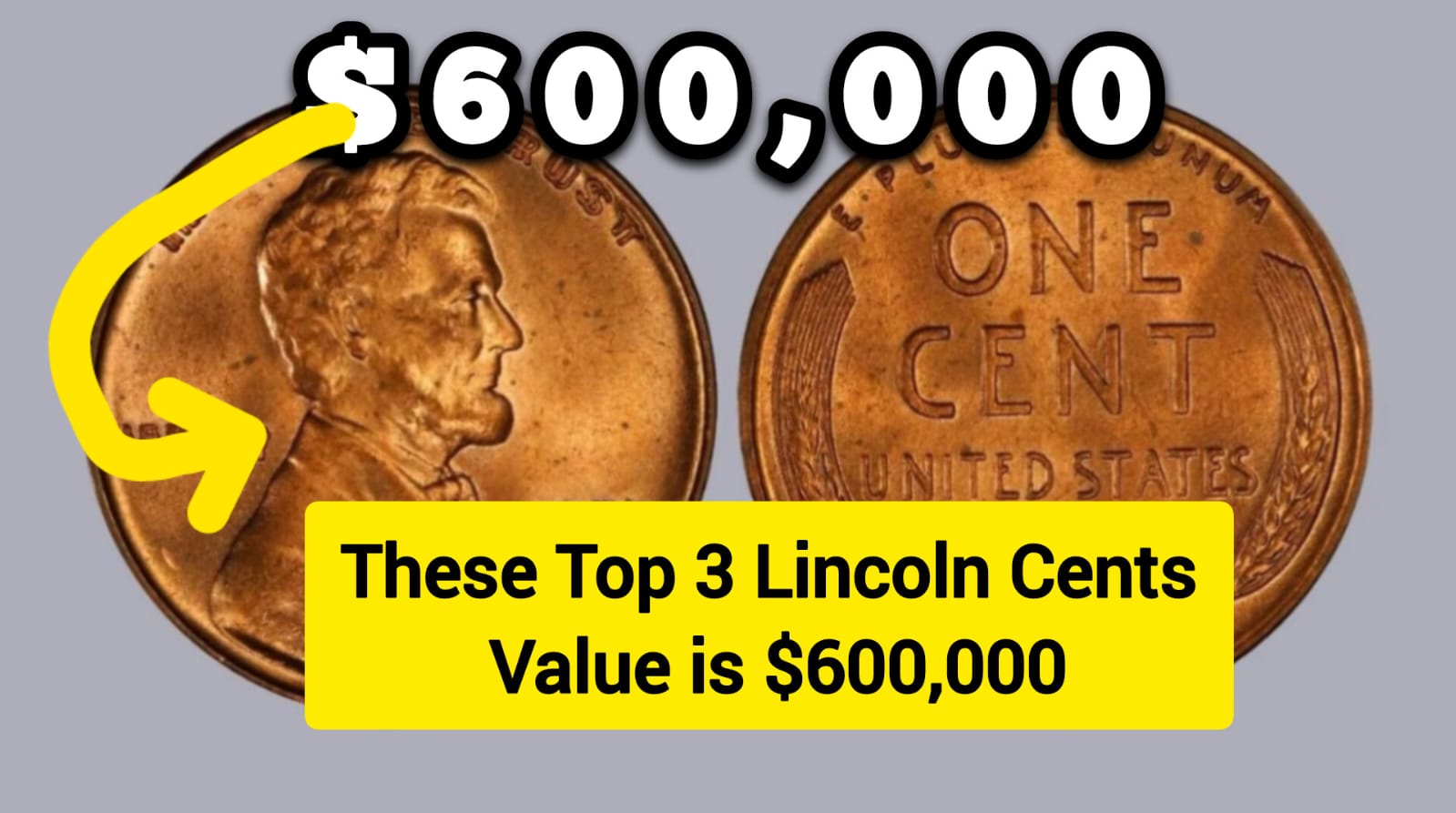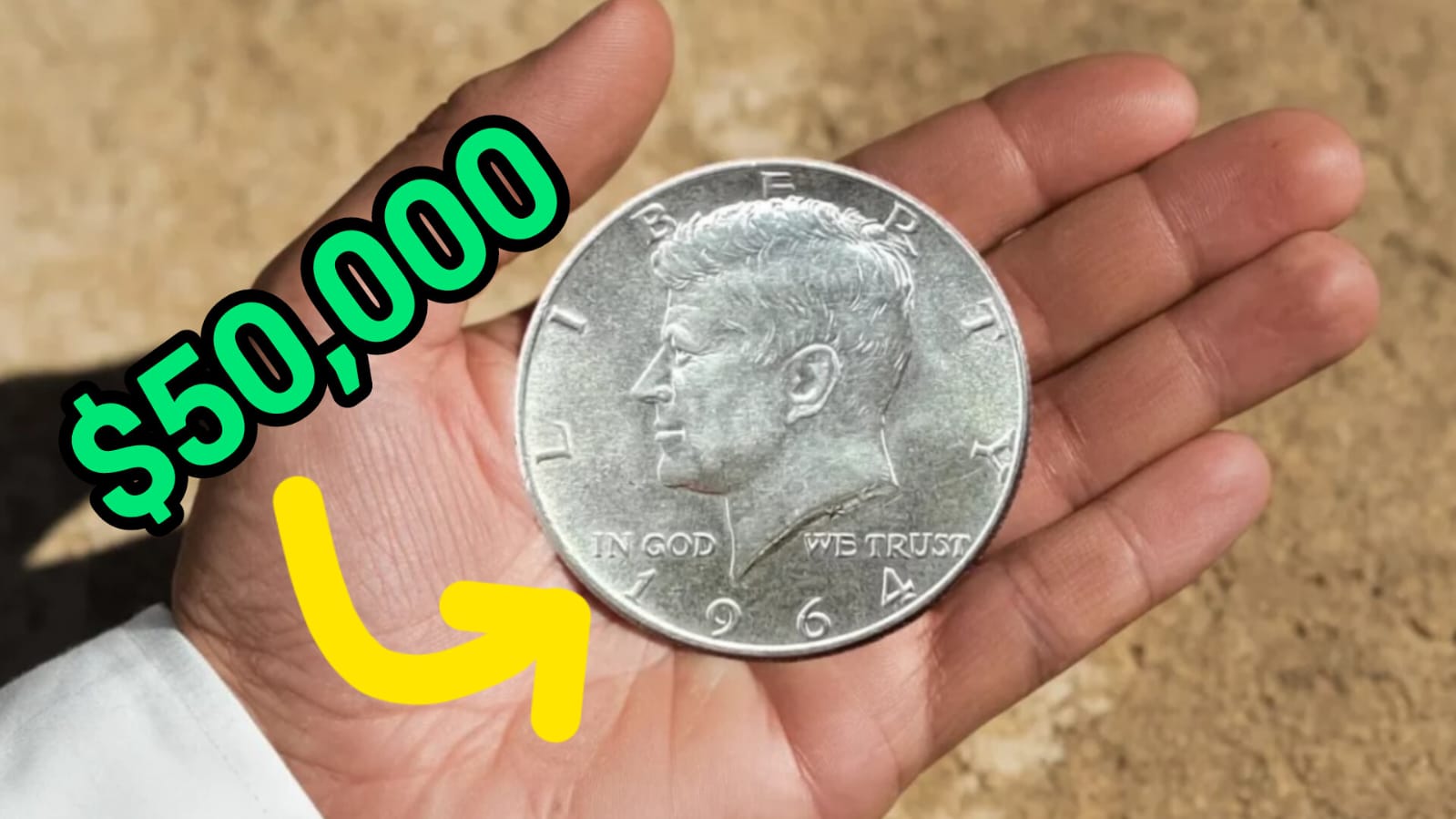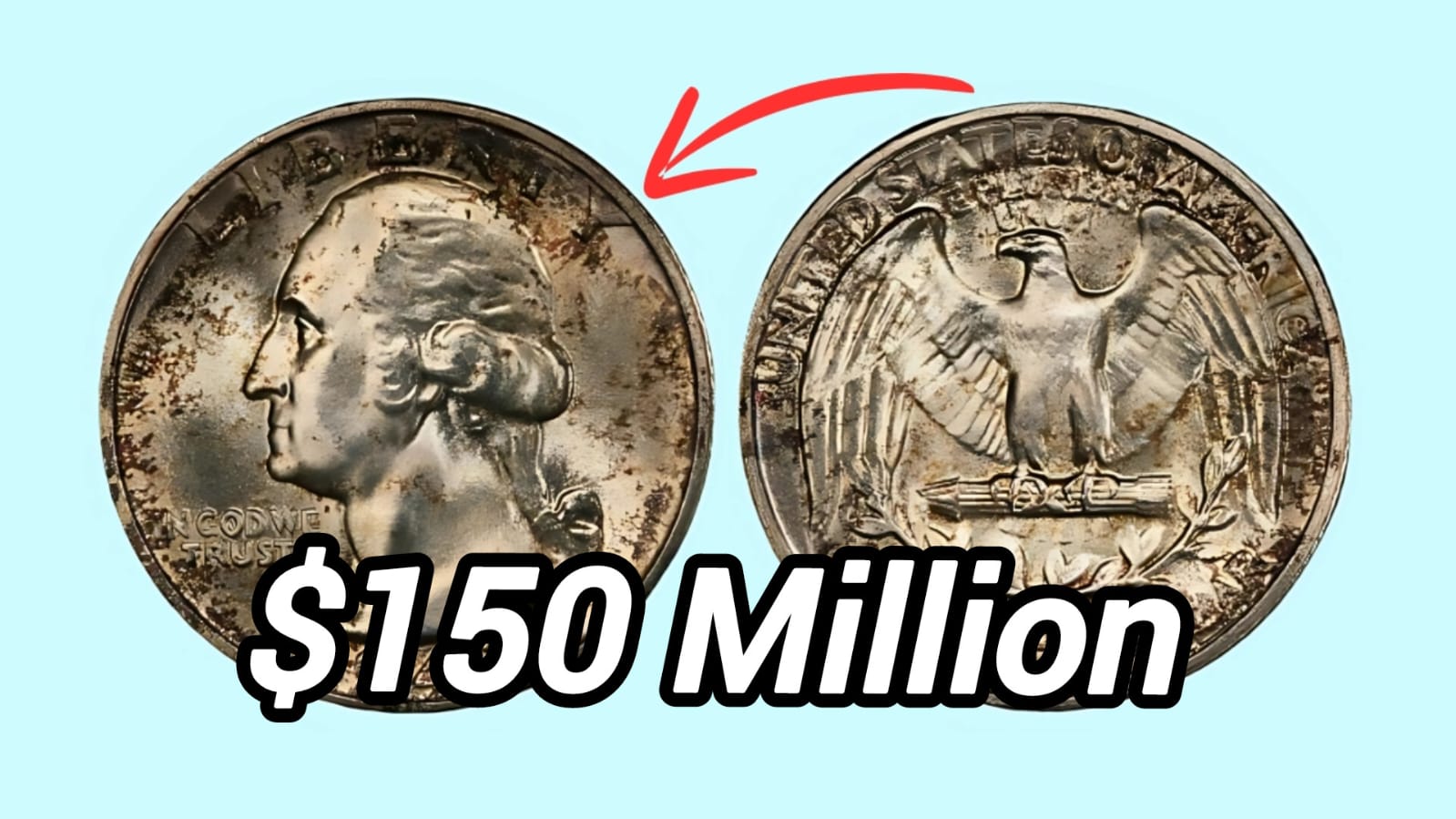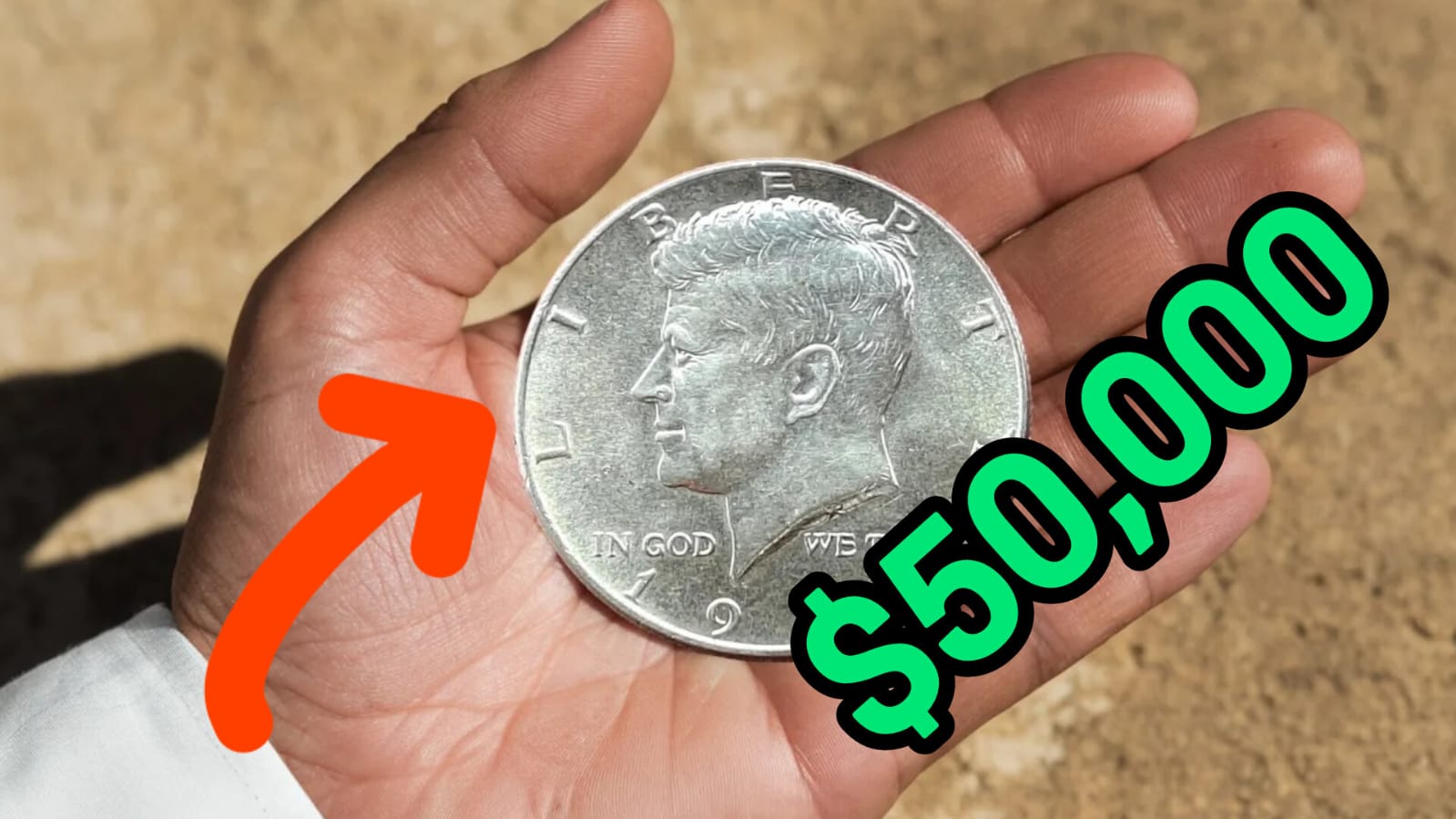Lincoln Cents: Have you ever flipped through your spare change and wondered if any of those pennies might be worth more than just one cent? While most of us toss our loose change without a second thought, certain rare Lincoln cents could potentially be worth hundreds of thousands of dollars to collectors.
In fact, the top three most valuable Lincoln cents have a combined value of approximately $600,000! These small copper treasures might be hiding in your coin jar, piggy bank, or even passing through your hands in everyday transactions.
In this article, I’ll explore the three most valuable Lincoln cents that could still be in circulation today, explain what makes them so incredibly valuable, and help you identify if you might be holding one of these copper jackpots.
So before you cash in that jar of pennies at the bank, you might want to take a closer look – your retirement fund could be hiding among those humble coins!
What Makes These Lincoln Cents So Valuable?
Before we dive into the specific coins, it’s important to understand what transforms an ordinary penny into a collector’s dream. Like rare paintings or vintage cars, coins become valuable through a combination of factors:
- Rarity: The fewer examples that exist, the more valuable a coin becomes. Some coins are rare because few were minted, while others became scarce because most were melted down or lost over time.
- Historical Significance: Coins connected to significant historical events or periods often command premium prices.
- Minting Errors: Mistakes during the minting process can create unique variants that collectors covet.
- Condition: A coin’s grade dramatically affects its value. Professional grading services use a 70-point scale, with higher numbers indicating better preservation.
Think of these factors as ingredients in a recipe – the more you have, and the better their quality, the more valuable the final result will be. Now, let’s explore the three Lincoln cents that have captured collectors’ attention and wallets.
The Top 3 Most Valuable Lincoln Cents
1. The 1943 Copper Lincoln Cent: A Wartime Mistake
Estimated Value: $250,000 – $300,000
The 1943 Copper Lincoln Cent is perhaps the most famous error coin in American numismatics. During World War II, copper was needed for the war effort, so the U.S. Mint switched to zinc-coated steel for pennies in 1943.
However, a few copper planchets (coin blanks) from 1942 accidentally made their way into the production line, resulting in the extremely rare 1943 copper penny.
Only about 20-30 of these pennies are known to exist across all three mints (Philadelphia, Denver, and San Francisco), making them among the rarest and most valuable U.S. coins. The 1943-D (Denver) copper penny is the rarest, with just one known to exist.
To identify a genuine 1943 copper penny:
- It should have the date 1943
- It should NOT stick to a magnet (unlike the steel pennies from that year)
- It should weigh approximately 3.11 grams
- It should have a distinctive copper color rather than the silvery appearance of the steel cents
Finding one of these rare pennies would be like discovering a diamond in your backyard – unlikely but not impossible, and potentially life-changing if you do!
2. The 1955 Doubled Die Obverse Lincoln Cent: The Famous Error
Estimated Value: $1,000 – $114,000
The 1955 Doubled Die Obverse Lincoln Cent is one of the most famous error coins in American numismatics. This error occurred when the die used to strike the coins was improperly made, causing a noticeable doubling effect on the obverse (front) side. The doubling is most visible in the date, the word “LIBERTY,” and the motto “IN GOD WE TRUST.”
Approximately 20,000-24,000 of these error coins entered circulation before the mistake was discovered, making them rare but not impossible to find. Even in worn condition, these pennies can fetch $1,000 or more, while pristine examples have sold for over $114,000.
What makes this error so fascinating is that it’s visible to the naked eye – you don’t need special equipment to spot the doubling. It’s like nature’s signature on an otherwise ordinary coin, making it instantly recognizable to collectors.
3. The 1909-S VDB Lincoln Cent: The Classic Rarity
Estimated Value: $700 – $117,500
The 1909-S VDB Lincoln Cent is one of the most famous and sought-after coins in American numismatics. The “VDB” refers to the initials of the coin’s designer, Victor David Brenner, which appear on the reverse. The “S” indicates it was minted in San Francisco.
Only 484,000 were produced before public controversy over the prominence of the designer’s initials led to their removal, creating an instant rarity. Even in worn condition, these pennies command prices of $700 or more, while pristine examples have sold for over $117,500.
This coin represents the very beginning of the Lincoln cent series, which has now been produced for over a century. Owning a 1909-S VDB is like owning a piece of the very first chapter in the Lincoln cent story.
| Rank | Penny | Key Features | Estimated Value Range |
|---|---|---|---|
| 1 | 1943 Copper | Copper instead of steel, doesn’t stick to magnet | $250,000 – $300,000 |
| 2 | 1955 Doubled Die | Visible doubling on date and lettering | $1,000 – $114,000 |
| 3 | 1909-S VDB | Designer’s initials on reverse, San Francisco mint | $700 – $117,500 |
How to Identify Valuable Lincoln Cents
Now that you know which pennies to look for, here are some practical tips to help you identify potentially valuable specimens:
Check the Date and Mint Mark
The date appears on the obverse (front) of the coin, while the mint mark (if present) can be found on the obverse below the date. Coins from Philadelphia often have no mint mark, while those from Denver have a “D” and those from San Francisco have an “S.”
Key dates to look for include 1909-S, 1914-D, 1922 (no D), 1931-S, and of course, 1943 (copper) and 1955 (doubled die).
Examine for Errors and Varieties
Use a magnifying glass to look for doubling, off-center strikes, or other unusual features. The 1955 Doubled Die is the most famous, but there are many other valuable error coins in the Lincoln cent series.
Some errors to look for include:
- Doubled dies (where design elements appear doubled)
- Off-center strikes
- Repunched mint marks
- Missing mint marks (like the 1922 No D)
Test with a Magnet
This is particularly important for 1943 pennies. A 1943 penny that doesn’t stick to a magnet might be the valuable copper variety, while a 1944 penny that does stick could be a rare steel version.
Assess the Condition
Coin condition dramatically affects value. Numismatists use a 70-point scale, with higher numbers indicating better preservation. Even common Lincoln cents in pristine condition can be worth more than their face value.
Conclusion
The world of rare Lincoln cents offers a fascinating blend of history, artistry, and the thrill of the hunt. While finding one of these top three valuable pennies worth a combined $600,000 might be a long shot, these treasures do occasionally turn up in unexpected places.
The 1943 Copper Cent, 1955 Doubled Die, and 1909-S VDB represent the pinnacle of Lincoln cent collecting, each with its own unique story and place in American numismatic history.
The next time you receive change or come across an old jar of coins, take a moment to examine those pennies carefully – you never know what treasures might be hiding in plain sight! Remember, the value of these coins extends beyond their monetary worth.
Each one represents a piece of American history, a tangible connection to the past that you can hold in your hand. Whether you’re a serious collector or just curious about what might be in your change jar, the search for rare Lincoln cents adds an element of excitement to everyday life. Happy hunting!
FAQs About Valuable Lincoln Cents
1. How can I tell if my 1943 penny is the valuable copper version? A genuine 1943 copper penny will not stick to a magnet (unlike the common steel version), will weigh approximately 3.11 grams, and will have a distinctive copper color. Be cautious of counterfeits, as some people copper-plate steel pennies or alter the dates on 1948 pennies to try to pass them off as the rare 1943 copper variety.
2. Are all wheat pennies valuable? No, most wheat pennies (Lincoln cents made from 1909-1958 with wheat stalks on the reverse) are worth only a few cents above face value. However, certain dates, mint marks, and error varieties can be worth substantially more. Even common wheat pennies in uncirculated condition can command a premium over face value.
3. Should I clean my old pennies to make them look better? Absolutely not! Cleaning coins can significantly reduce their value to collectors, who prefer original surfaces even if they show some toning or wear. If you believe you have a valuable coin, consult with a professional numismatist before doing anything that might damage it.
4. Where can I get my rare penny authenticated? Professional coin grading services like PCGS (Professional Coin Grading Service) or NGC (Numismatic Guaranty Corporation) can authenticate and grade your coin for a fee. For potentially valuable specimens like the 1943 copper penny, professional authentication is essential.
5. Is it legal to own error coins like the 1943 copper penny? Yes, it’s completely legal to own error coins, including the 1943 copper penny. While some experimental patterns and trial pieces may be claimed by the government, error coins that were legitimately released into circulation are legal to own and trade.
Most Rare Lincoln Wheat Penny Valued at $56 Million, Do You Have One?
Rare 5 Lincoln Wheat Penny Valued at $89 Million, Still in Circulation



